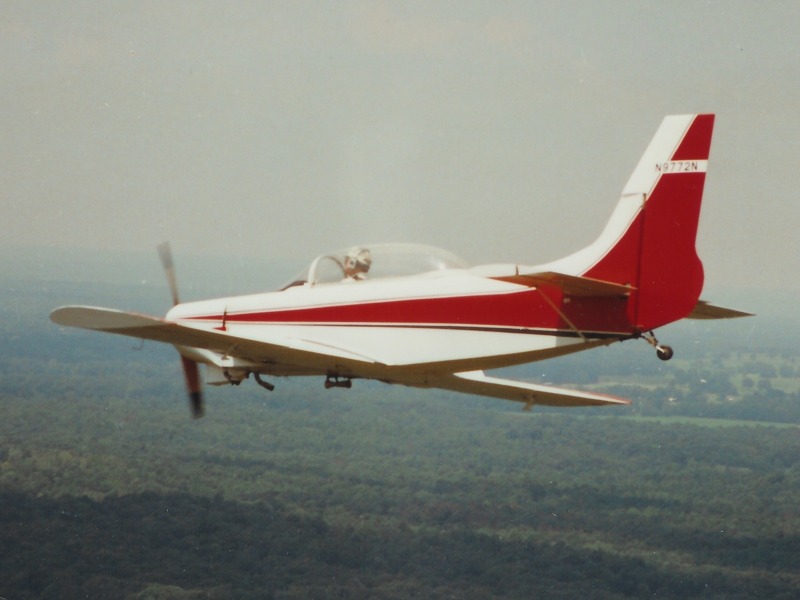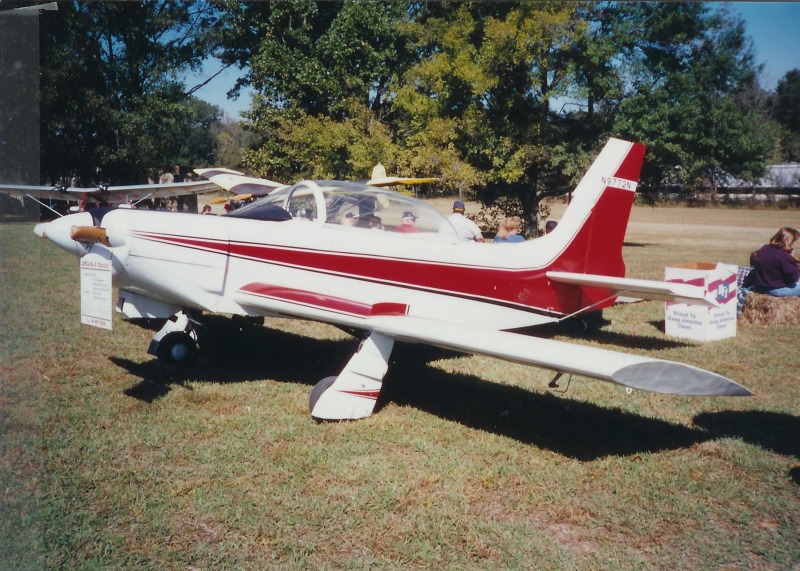| MJ-5 #120 | N9772N |
|
| Construction: 1989 |
Moteur / Engine : Lycoming O-290 135 cv / hp - Voltige / Aerobatic | |
|
Le premier vol a eu lieu en 1989. Il est équipé d'un train rentrant et d'un moteur Lycoming O-290-D2 de 125 puis 135 cv (pistons modifiés). Le plastron avant est celui d'un Thorp T18. L'appareil a subit quelques dommages lors d'un atterrissage en campagne suite à un givrage carburateur le 5 décembre 1998 à Madison, Mississippi. Le pilote et son passager n'ont pas été blessés. Qui en sait plus ? Revole-t-il ? Masse à vide : 492 kg Il écrit en 1992 à Marcel Jurca : "Please accept my thanks for a super aircraft that has given both my wife and me much pleasure".
The maiden flight was 1989. She bas a retractable gear and a 135 hp Lycoming O-290-D2 (type MJ-5 E2). The nose cowl comes from Thorp T18. December 5th, 1998, this plane made a field landing due to frozen carburator at Madisson. Does this plane flies again? Who's gonna send us recent pictures? More from the Web: The plans are complete from the firewall back. Engine mount drawings are included, though the cowling is left to the builder, as everyone wants their own. I used the T-18 type nose bowl and cooling air exhaust gills. I do not think less than 160 hp would be good for a high altitude western airport. My choice is a wooden propeller pitched for the aircraft-engine and the airport altitude.
It stalls straight ahead with little warning and has a slight tendency to tuck the left wing; right rudder input keeps the wing level. Three turn spins are the maximum though I will not go past two. It winds up fast and drops like a stone, 2 turns are enough of this fun for me. It rolls like a ball and would fly well inverted with an inverted system. Unless you go over the top of the loop just above stall speed, the backside of the loop is quite fast. Split S out of a roll and you see 195 mph quite quickly. I will not fly inverted with a passenger. The wide landing gear and big rudder make for easy landings. I have landed in a 20 mph 90 degree x-wind with no problem, though no fun if wind gusts are present. It lands like any other taildragger only faster than some. Fly the pattern at 100 mph, final at 90, slow to 80, land at 70, and roll out and stop. A full stall landing would be slower. Pattern altitude turns MUST be gentle coordinated turns as a stall spin wold be fatal. While Sirocco has a high power off sink rate, it wants to float in ground effect. Land with the wings level as it is easy to drag a wing tip - yes, I have been there, done that. The controls are light and very responsive, it almost responds when you start thinking what you want next. Sirocco is not a trainer, but will not try to turn around and bite you. Sirocco, if flown properly, is a safe aircraft that is a sheer pleasure to fly. Everywhere I take it people are interested and make very complimentary comments. The retract gear is of special interest.
|
||
|
Situation :
|
USA, Raymond, MS | |
|
Liens / Links :
|
||






